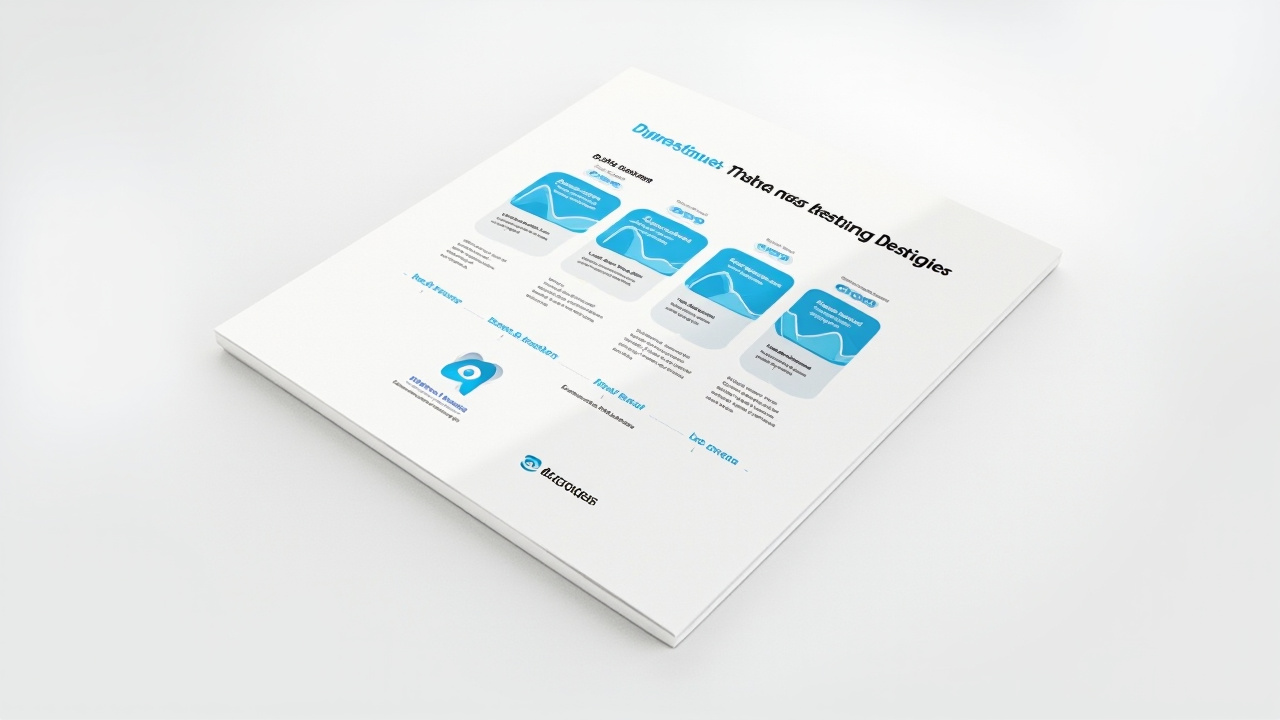In the fast-paced world of software development, ensuring the quality of your product is no longer an option it’s a necessity. Software testing, once seen as an ancillary step in the development process, has now become a critical component that can make or break the success of a software product. As software systems become increasingly complex, the role of software testing has evolved, demanding more sophisticated techniques and a deeper understanding of the intricacies involved.
Despite its importance, many organizations still struggle with implementing effective testing strategies. The challenges range from tight deadlines and budget constraints to rapidly changing requirements and the integration of new technologies. However, the consequences of inadequate testing can be dire, leading to software failures, security breaches, and ultimately, loss of customer trust and revenue.
In this comprehensive guide, we will delve into the world of software testing, exploring its various aspects, methodologies, and best practices. Whether you’re a seasoned software engineer or a newcomer to the field, this guide will equip you with the knowledge and tools necessary to enhance your testing processes and deliver high-quality software products.
Understanding the Fundamentals of Software Testing

To embark on a successful testing journey, it’s essential to grasp the fundamental principles that underpin effective software testing. At its core, software testing is the process of evaluating a software application to ensure it meets specified requirements and is free of defects.
The Purpose and Importance of Software Testing
Software testing serves multiple purposes, each contributing to the overall quality of the product. The primary goal is to identify and rectify errors, ensuring the software functions as intended. Additionally, testing provides insights into the software’s reliability, performance, and security, helping developers make informed decisions about further development and improvements.
“Testing is not just about finding bugs, but about gaining confidence in the software’s behavior and performance.”
Testing also plays a crucial role in risk management. By identifying potential issues early in the development process, teams can mitigate risks associated with software failures, ultimately reducing the cost and time required for fixes post-deployment. Moreover, thorough testing enhances customer satisfaction, as users are less likely to encounter disruptions or security vulnerabilities.
Types of Software Testing
Software testing is a broad field encompassing various types, each designed to evaluate different aspects of the software. The two main categories are manual testing and automated testing.
Manual Testing involves human testers manually executing test cases without the use of automated tools. This type of testing is essential for exploratory testing, where testers use their intuition and experience to uncover issues that automated tests might miss.
Automated Testing, on the other hand, uses specialized software tools to run test cases automatically. This approach is ideal for repetitive tasks and regression testing, allowing teams to focus their efforts on more complex testing scenarios.
“Automation is not a silver bullet, but a powerful tool when used appropriately.”
Understanding these fundamentals sets the stage for exploring more advanced testing methodologies and strategies.
Exploring Various Software Testing Methodologies

With a solid foundation in the basics of software testing, we can now explore the diverse methodologies that guide testing efforts. Each methodology offers unique advantages and is suited to different development environments and project requirements.
Agile Testing: Embracing Flexibility
Agile testing aligns with the principles of Agile software development, emphasizing collaboration, flexibility, and customer feedback. In an Agile environment, testing is integrated into the development process, allowing for continuous feedback and iterative improvements.
Key Characteristics of Agile Testing
- Collaborative Approach: Testers work closely with developers, product owners, and other stakeholders to ensure a shared understanding of requirements and expectations. Continuous Feedback: Regular testing cycles and frequent feedback loops enable teams to identify and address issues promptly. Adaptability: Agile testing is inherently flexible, allowing teams to adjust their testing strategies as requirements evolve.
“Agile testing thrives on communication and collaboration, breaking down silos between development and testing teams.”
Agile testing is particularly beneficial for projects with rapidly changing requirements, as it allows teams to adapt quickly and deliver high-quality software in shorter timeframes.
Waterfall Testing: A Traditional Approach
In contrast to Agile testing, Waterfall testing follows a linear, sequential approach. Testing is conducted at the end of the development cycle, after all the features have been implemented.
Advantages of Waterfall Testing
- Clear Structure: The structured nature of Waterfall testing provides a clear roadmap, making it easier to manage large-scale projects with well-defined requirements. Predictability: With testing occurring at the end of the development cycle, teams have a comprehensive view of the software, enabling thorough testing and defect identification.
However, the rigidity of the Waterfall model can be a limitation in projects where requirements are likely to change, as it leaves little room for adjustments once development is underway.
Shift Left and Shift Right Testing: Expanding the Scope
As software development practices evolve, so too do testing methodologies. Shift Left and Shift Right testing are two modern approaches that expand the scope of testing beyond traditional boundaries.
Shift Left Testing involves integrating testing activities earlier in the development process, often during the design and coding phases. This proactive approach aims to identify and address issues before they progress, reducing the cost and effort required for fixes.
Shift Right Testing, in contrast, focuses on testing in the production environment. By monitoring software behavior in real-world conditions, teams can gather valuable data to enhance performance and user experience.
“Shift Left and Shift Right testing challenge traditional testing boundaries, offering new insights and opportunities for improvement.”
These methodologies reflect a growing recognition of the importance of continuous testing and feedback throughout the software development lifecycle.
The Role of Automation in Modern Software Testing

In today’s fast-paced development environments, automation has become a cornerstone of effective software testing. By leveraging automated testing tools, teams can enhance efficiency, accuracy, and coverage, ultimately delivering higher-quality software.
Benefits of Automated Testing
Automated testing offers numerous advantages, making it an indispensable component of modern testing strategies.
Efficiency and Speed: Automated tests can be executed much faster than manual tests, enabling teams to conduct more tests in less time. This speed is particularly beneficial for regression testing, where existing functionality must be verified after each code change.
Consistency and Reproducibility: Automated tests ensure consistent execution, eliminating the variability inherent in manual testing. This consistency is crucial for detecting subtle defects and ensuring reliable test results.
Comprehensive Coverage: Automated testing allows teams to achieve broader test coverage, as tests can be executed across multiple platforms, devices, and configurations.
“Automation allows teams to focus on creative problem-solving, freeing them from the repetitive tasks that can stifle innovation.”
Challenges and Considerations in Automation
While automation offers significant benefits, it is not without challenges. Successful automation requires careful planning, skilled resources, and appropriate tool selection.
Key Considerations
- Tool Selection: Choosing the right automation tools is critical to the success of automated testing. Teams must evaluate tools based on factors such as compatibility, ease of use, and support for the specific technologies in use. Test Maintenance: Automated tests require regular maintenance to remain effective. As the software evolves, tests must be updated to reflect changes in functionality and requirements. Initial Investment: Implementing automation requires an upfront investment in time and resources, but the long-term benefits often outweigh these initial costs.
“Automation is an enabler, not a replacement for skilled testers.”
Automated testing should complement, not replace, manual testing efforts. By combining both approaches, teams can achieve the best of both worlds: the thoroughness of manual testing and the efficiency of automation.
Best Practices for Effective Software Testing

To maximize the impact of software testing, it’s essential to adopt best practices that enhance efficiency, accuracy, and collaboration. These practices are grounded in industry experience and proven methodologies.
Developing a Robust Testing Strategy
A well-defined testing strategy serves as the foundation for successful testing efforts. It outlines the testing objectives, scope, and approach, ensuring alignment with project goals.
Key Components of a Testing Strategy
- Objective Setting: Clearly define the testing objectives, focusing on areas such as functionality, performance, and security. Scope Definition: Identify the features, components, and configurations to be tested, along with any limitations or exclusions. Resource Allocation: Assign roles and responsibilities, ensuring that testers, developers, and other stakeholders understand their contributions to the testing process.
“A robust testing strategy is a roadmap to success, guiding teams through the complexities of software testing.”
Embracing Continuous Testing
Continuous testing is an integral part of modern software development, enabling teams to receive timely feedback and make informed decisions throughout the development lifecycle.
Principles of Continuous Testing
- Integration with DevOps: Continuous testing is often integrated with DevOps practices, facilitating seamless collaboration between development, testing, and operations teams. Automated Test Execution: Automated tests are executed continuously, providing rapid feedback on code changes and identifying defects early in the process. Real-time Monitoring: Continuous testing involves monitoring software behavior in real-time, allowing teams to detect issues as they arise and respond proactively.
Collaboration and Communication
Effective software testing requires collaboration and communication between all stakeholders. By fostering a culture of openness and transparency, teams can address challenges and capitalize on opportunities for improvement.
Strategies for Enhancing Collaboration
- Cross-functional Teams: Encourage collaboration between developers, testers, product owners, and other stakeholders, breaking down silos and promoting shared responsibility. Regular Meetings: Schedule regular meetings to discuss testing progress, challenges, and insights, ensuring that all team members are aligned and informed.
“Collaboration is the glue that holds successful testing efforts together, enabling teams to achieve more than the sum of their parts.”
Real-world Applications and Case Studies in Software Testing

While understanding theories and methodologies is crucial, seeing how they are applied in real-world scenarios can provide invaluable insights. Here, we explore case studies and examples that highlight the successful application of software testing practices.
Case Study: Automation Success in a Global E-commerce Platform
A leading global e-commerce platform faced the challenge of ensuring seamless user experiences across multiple devices, languages, and currencies. The company’s manual testing efforts were proving insufficient to keep pace with rapid development cycles and frequent updates.
Solution and Outcome
- Implementation of Automated Testing: The company adopted a comprehensive automated testing strategy, utilizing tools compatible with their tech stack to automate regression testing and end-to-end scenarios. Increased Test Coverage: Automation enabled the team to achieve broader test coverage, identifying defects across various environments and configurations. Improved Time-to-market: With automated tests running in parallel, the company reduced testing time significantly, allowing for faster releases and more frequent updates.
“Automation enabled the e-commerce platform to deliver consistent, high-quality experiences across the globe, enhancing customer satisfaction and loyalty.”
Example: Agile Testing in a Start-up Environment
A start-up specializing in mobile app development embraced Agile testing to cope with rapidly changing requirements and a dynamic market landscape.
Approach and Results
- Integration of Testing in Development: Testers were embedded within development teams, participating in daily stand-ups and sprint planning meetings. Frequent Iterations and Feedback: The start-up adopted a continuous integration pipeline, enabling frequent testing and feedback loops. This approach allowed the team to respond quickly to user feedback and market trends. Enhanced Product Quality: Agile testing contributed to improved product quality, as defects were identified and resolved early in the development process.
“Agile testing fostered a culture of collaboration and innovation, empowering the start-up to adapt and thrive in a competitive market.”
Overcoming Challenges and Future Trends in Software Testing

As technology continues to evolve, software testing faces new challenges and opportunities. Staying ahead of these trends is essential for maintaining effective testing processes and delivering high-quality software.
Addressing Common Testing Challenges
Testing teams often encounter challenges that can hinder their efforts and impact the quality of the software. Recognizing and addressing these challenges is crucial for success.
Common Challenges
- Resource Constraints: Limited budgets and tight timelines can restrict testing efforts, leading to incomplete coverage and missed defects. Complexity of Modern Software: As software systems become more complex, testing becomes more challenging, requiring advanced techniques and tools. Integration and Compatibility Issues: Testing across multiple platforms, devices, and configurations can introduce integration challenges and compatibility issues.
Future Trends in Software Testing
The future of software testing is shaped by emerging technologies and methodologies that promise to revolutionize testing practices.
Key Trends
- AI and Machine Learning: AI-driven testing tools are gaining traction, offering the potential to optimize test case generation, defect prediction, and test execution. Test Automation at Scale: As automation becomes more prevalent, organizations are exploring ways to scale their automation efforts, achieving even greater efficiency and coverage. Shift Towards Quality Engineering: The focus is shifting from traditional testing to quality engineering, emphasizing a holistic approach to quality that encompasses the entire development lifecycle.
“The future of software testing is bright, with new technologies and methodologies paving the way for more efficient, effective testing practices.”
Conclusion: Elevating Your Software Testing Practices

Software testing is a dynamic, multifaceted field that plays a critical role in ensuring the quality and success of software products. By understanding the fundamentals, exploring diverse methodologies, and embracing best practices, teams can enhance their testing efforts and deliver software that meets and exceeds customer expectations.
As technology continues to evolve, staying informed about the latest trends and innovations is essential for maintaining effective testing processes. By doing so, organizations can overcome challenges, capitalize on opportunities, and achieve new levels of software quality.
“Effective software testing is an ongoing journey, not a destination. By continuously learning and adapting, teams can unlock the full potential of their testing efforts.”
For those eager to delve deeper into the world of software testing, there are countless resources, courses, and communities available to explore. Whether you’re looking to adopt new methodologies, automate your testing processes, or simply enhance your understanding, the journey is filled with opportunities for growth and discovery.
Explore Further: If you’re ready to take your software testing skills to the next level, consider exploring online courses, joining testing communities, or attending industry conferences. The world of software testing is rich with knowledge and opportunities for those willing to dive in.
Explore More on This Topic
Interested in diving deeper into this subject? Connect with experts or explore additional resources to expand your understanding.
If the link above does not work, please visit: https://calendly.com/dm-csimplifyit/30min?month=2025-05